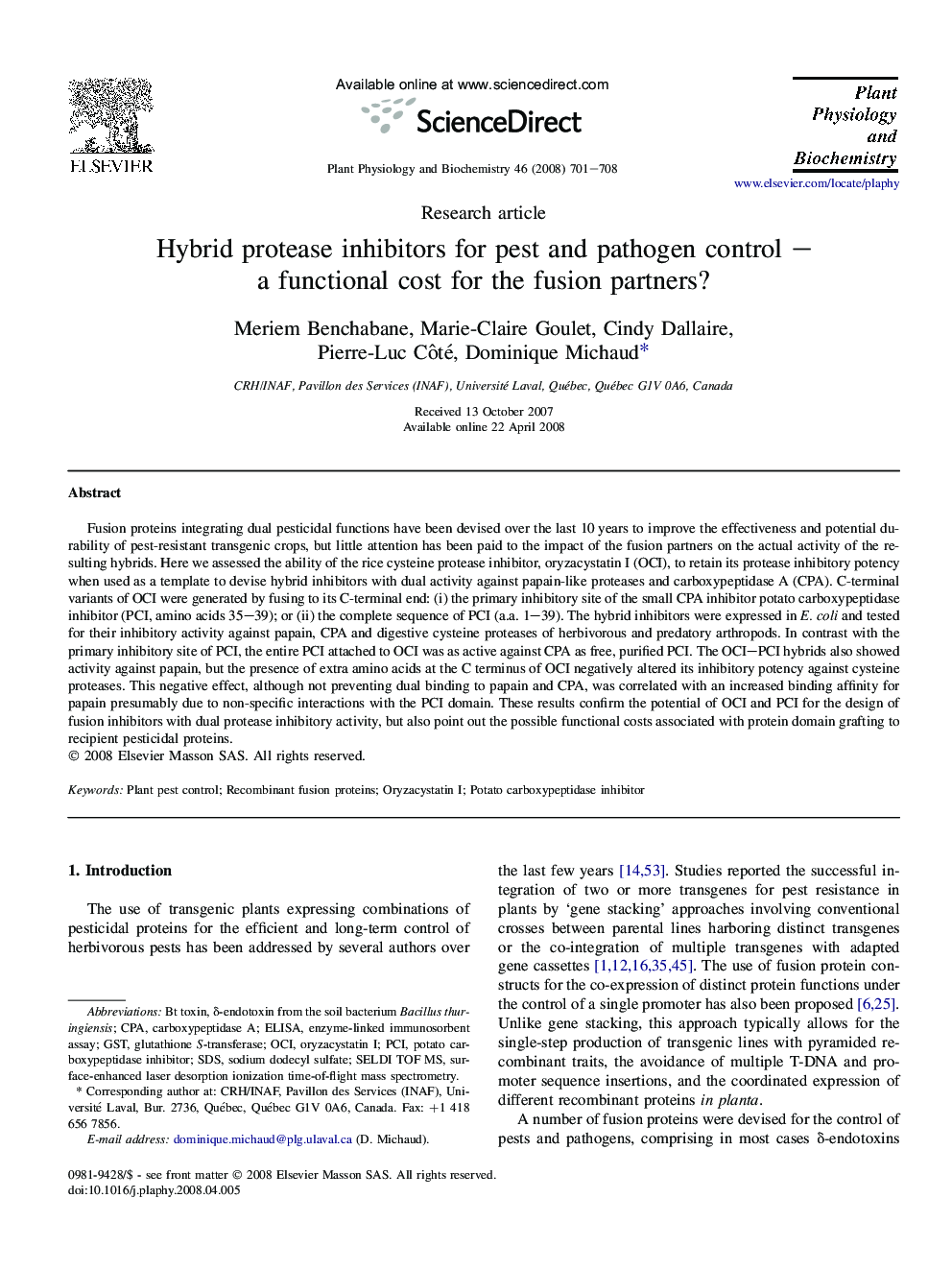| Article ID | Journal | Published Year | Pages | File Type |
|---|---|---|---|---|
| 2016810 | Plant Physiology and Biochemistry | 2008 | 8 Pages |
Fusion proteins integrating dual pesticidal functions have been devised over the last 10 years to improve the effectiveness and potential durability of pest-resistant transgenic crops, but little attention has been paid to the impact of the fusion partners on the actual activity of the resulting hybrids. Here we assessed the ability of the rice cysteine protease inhibitor, oryzacystatin I (OCI), to retain its protease inhibitory potency when used as a template to devise hybrid inhibitors with dual activity against papain-like proteases and carboxypeptidase A (CPA). C-terminal variants of OCI were generated by fusing to its C-terminal end: (i) the primary inhibitory site of the small CPA inhibitor potato carboxypeptidase inhibitor (PCI, amino acids 35–39); or (ii) the complete sequence of PCI (a.a. 1–39). The hybrid inhibitors were expressed in E. coli and tested for their inhibitory activity against papain, CPA and digestive cysteine proteases of herbivorous and predatory arthropods. In contrast with the primary inhibitory site of PCI, the entire PCI attached to OCI was as active against CPA as free, purified PCI. The OCI–PCI hybrids also showed activity against papain, but the presence of extra amino acids at the C terminus of OCI negatively altered its inhibitory potency against cysteine proteases. This negative effect, although not preventing dual binding to papain and CPA, was correlated with an increased binding affinity for papain presumably due to non-specific interactions with the PCI domain. These results confirm the potential of OCI and PCI for the design of fusion inhibitors with dual protease inhibitory activity, but also point out the possible functional costs associated with protein domain grafting to recipient pesticidal proteins.
